Please refresh page manually for updates
Latest news on Friday
- France to deploy 89,000 police throughout the country including 8,000 in Paris
- A growing number of tourist sites in Paris including the Eiffel Tower to be closed
- READ ALSO: Now it's personal – What the 'yellow vests' want is Macron on his knees
- READ ALSO: The yellow rebellion is threatening to engulf France
Scroll down for all the day's events
To read all the latest articles on the yellow vest protests and the impact on France and Paris in particular CLICK HERE.
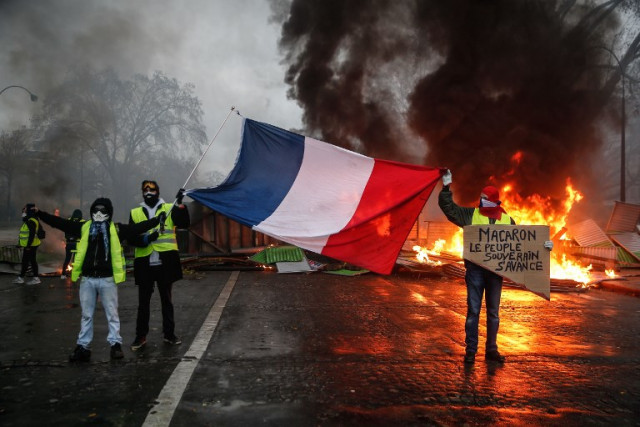
'Gilets Jaunes libres' to meet the Prime Minister
A group of so-called gilets jaunes libres (free yellow vests) including Benjamin Cauchy, who has become an unofficial spokesman for the movement will meet French Prime Minister Edouard Philippe on Friday evening.
The group, who many gilets jaunes insist do not represent them, wanted to meet the president, but was apparently refused an audience. Emmanuel Macron is trying to stay out of the limelight for fear of inflaming the situation.
Journalists given protection and protective gear
Journalists in France covering the protests tomorrow have been advised to wear protective gear and only take smartphones instead of cameras.
Several journalists have already been the subject of violence, notably in Toulouse and of abuse by a minority of protesters who claim the mainstream media is against them.
BFM TV have employed security guards to accompany every journalist who is out on the ground. They have been instructed to intervene if reporters are attacked.
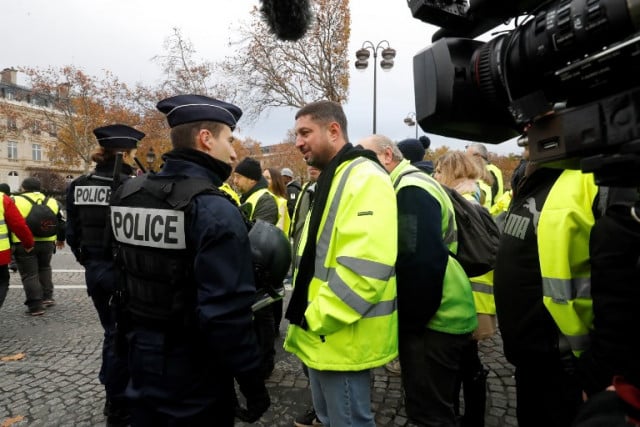
Bordeaux also closes its Museums on Saturday
It's just Paris that is closing down its cultural sites. Authorities in Bordeaux, which has also seen outbreaks of violence in recent days has also announced it will close around 10 museums.
Updated advice for Britons in France from Foreign Office
The UK foreign office has updated its travel advice for Britons in France. This is what the latest information says.
“Protests against fuel prices linked to the yellow vest (gilets jaunes) movement continue across France, leading to blocked roads and motorways in some areas. Demonstrations are also planned in Paris on Saturday 8 December, which could be widespread and could cause extensive disruption.
“Recent demonstrations have led to violence and extensive damage to property. In preparation for Saturday’s expected demonstrations, which may again turn violent, the authorities have announced that a number of museums and tourist sites in central Paris will be closed. Shops on the Champs Elysées and surrounding streets, as well as some Metro (underground) stations, will also be closed.
“You should be aware that substantial numbers of police and gendarmerie officers will be present in central Paris to ensure security.
“Outside Paris, related demonstrations are likely to occur in other towns and cities across the country. Motorists travelling through France may also experience delays or blockages caused by demonstrators at motorway toll booths. In all cases, you should avoid any demonstrations if at all possible and follow the advice of the local authorities.”
MP for Macron's party receives bullet in the post
The list of famous Paris sites to close on Saturday continues to grow with the latest count being 48, including the Louvre, the Eiffel Tower and the Grand Palais.
Open top bus tours will not be running, many theatres will also close and the city's big department stores will also shut for the day;
Here's the latest list according to the City Hall.
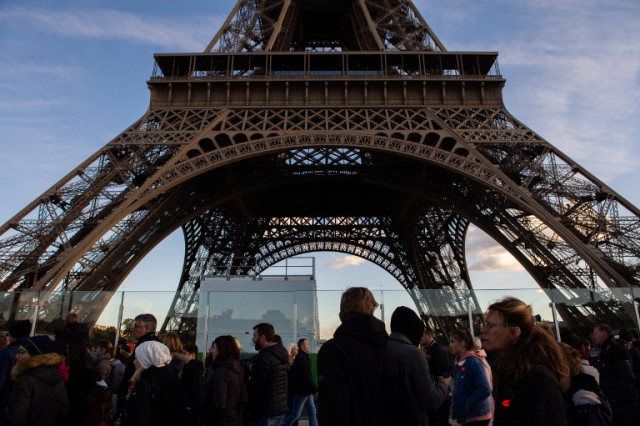
The parts of Paris to avoid on Saturday
There are some places to avoid if you're going to be in Paris on Saturday.
It's best to steer clear of the Champs-Elysees and the wide surrounding area, stretching towards the department stores on the Boulevard Haussmann, the area around Opera and Place de la Concorde should also probably be avoided, given there was widespread rioting there last weekend.
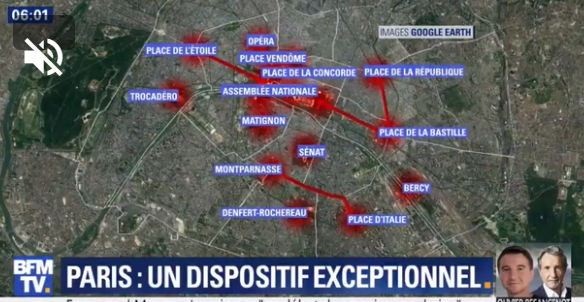
Facebook groups — the nerve centre of the “yellow vest” protest movement
Residents living around the upmarket Champs-Elysees area of Paris spoke to The Local about their worries as protesters gear up to hit the French capital once again on Saturday, with the government fearing a repeat of last weekend's violence.
“Of course I'm scared about what will happen tomorrow and I'm not planning to leave the house,” Isabelle Rochas told The Local
The French government has sent out a video on Twitter to appeal to protesters not to resort to violence.
“Demonstrating is not smashing things up,” reads the text on the video.
Manifester est un droit. Alors sachons l’exercer. pic.twitter.com/tQWad3TsOY
— Gouvernement (@gouvernementFR) December 7, 2018
Galeries Lafayette and Printemps to close on Saturday
Grands magasins Galeries Lafayette and Printemps on Boulevard Haussmann will be closed on Saturday, according to reports in the French press.
Fermeture exceptionnelle des @Galeries_Laf Haussmann, Montparnasse et du @leBHVmarais le samedi 8 décembre 2018.
La sécurité des personnes – clients et collaborateurs – est la priorité absolue et quotidienne du groupe Galeries Lafayette tout au long de l’année. 1/3— Galeries Lafayette (@Galeries_Laf) December 7, 2018
One story that has caused widespread outrage on Friday is the arrest of 150 school pupils in Mantes-la-Jolie to the north west of Paris. The pupils were pictured on their knees surrounded by riot police with their hands on their heads (see link below).
France's rights watchdog the Defenseur des Droits has opened an investigation into the manner of the arrests.
Videos of French high-school pupils forced to kneel by police causes outcry
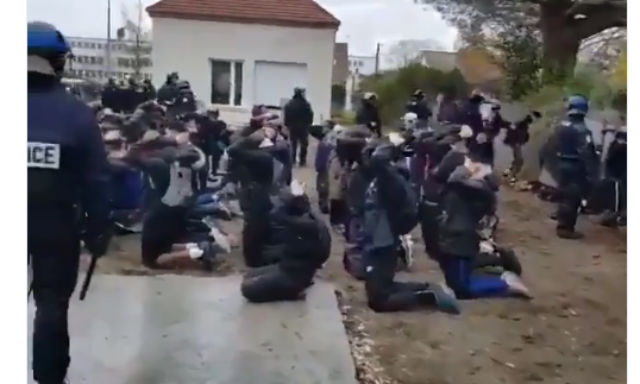
Where to avoid in Paris on Saturday?
Readers have been asking us if we can point out the places to avoid in Paris tomorrow.
This is not easy because as we saw last week the protest was meant to take place on the Champs Elysées but quickly descended into mayhem in the streets round the Arc de Triomphe, before spreading in the evening throughout the 8th arrondissement.
In the end only a section of the city was affected but the point is that is last week is anything to go by the its hard to predict what will happen. We've seen in previous demos where a violent fringe has turned up that they have ended in cat and mouse chases with police.
For example during the demos against labour law reforms anarchist and left-wing extremist groups break off from the main crowd and carry out destruction away from the watching police but in front of bemused members of the public. By the time the police were on the scene the damage was done and the rioters had moved off.
Nevertheless there are some areas to avid on Saturday, not least the Champs-Elysees and the wide surrounding area, stretching towards the department stores on the Boulevard Haussmann. A gilet jaunes march is also scheduled to take place between Bastille and Republique in the east of the city.
But many other areas on the Right Bank may also feel like ghost towns given shop owners are likely to take the decision to close.
Here's a map from BFM TV which highlights the areas, according to them, that you might want to avoid.

CGT truckers union also calls off strike
A big sigh of relief as just passed through the Elysée Palace after the CGT union joined the FO in calling OFF its planned rolling strike from Sunday. That action could have caused havoc on the roads.
It was to do with overtime rates but was also in sympathy with the yellow vest movement.
“Gilets jaunes libres' call for people not to go to Paris
A group calling itself the gilets jaunes libres or 'free yellow vests' have just been giving a press conference;
One of their spokespeople Benjamin Cauchy called for calm and for “respect for the forces of law and order”. He urged fellow “yellow vest” supporters not to head to Paris on Saturday to join the demonstration.
Cauchy also demanded talks with President Emmanuel Macron.
“We are ready for dialogue. We expect a political, tax and social electro-shock from the government,” he told media outside the French parliament.
“The government tries to make us out to be rioters, that's no the case.”
What's interesting is the amount of abuse directed towards Cauchy and fellow gilet jaune libre spokesperson Jacqueline Mouraud on Twitter. Many insist they don't represent the gilet jaune movement.
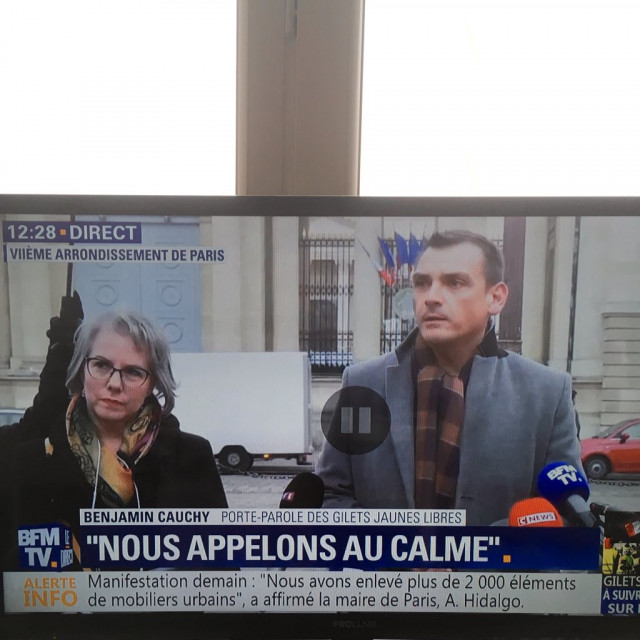
Molotov cocktails seized
AFP has just tweeted that 28 molotov cocktails otherwise known as petrol bombs were seized at a roundabout in Montauban near Toulouse, as well as three homemade bombs.
URGENT – Gilets jaunes: saisie de 28 cocktails Molotov et 3 bombes artisanales à Montauban https://t.co/24uTz3T53T via @BFMTV
— ALERTES INFO (@ALERTES_INFO) December 7, 2018
Paris mayor Anne Hidalgo gives details of how Paris will be affected on Saturday
The mayor of Paris has been given details about how the city will be in lockdown tomorrow. She calls for calm as you'd expect and for people to “take care of Paris”.
Velib bicycle stations and public buildings will be closed as well as numerous museums ad tourist sites such as the Eiffel Tower.
Hidalgo said it was with immense sadness that Paris will practically “come to a halt” but she said that security and safety were the main priorities.
The mayor said that hundreds of workers had been on duty throughout the week clearing “urban furniture” in other words barriers and bollards that can be used as weapons.
Some nine street markets across the capital that are normally open on a Saturday will not take place this weekend. Anyone who wants up to date information on the latest closures can visit www.Paris.fr
Anne Hidalgo détaille les mesures de sécurité à Paris pour samedi pic.twitter.com/VQrnCbUmxG
— BFMTV (@BFMTV) December 7, 2018
Where is President Emmanuel Macron throughout all this?
The French president has been notable by his absence in recent days. In fact he has hardly be seen at all apart from when he was jeered and heckled on a visit to a prefecture that was set ablaze by protesters last Saturday.
Macron, perhaps understandably given he has become the central figure of hate among yellow vest protesters, has thought it better to lie low and avoid “pouring oil on the fire”.
But one of the repeated complaints among yellow vest protesters is that they want to hear from their president. Many yellow vest protesters now believe his silence is a sign of disrespect and of how he holds them in contempt. Macron insists he accepts their anger.
The president can't win it seem. But we are told he will speak in some form after the weekend.
But who knows what might have happened by then.
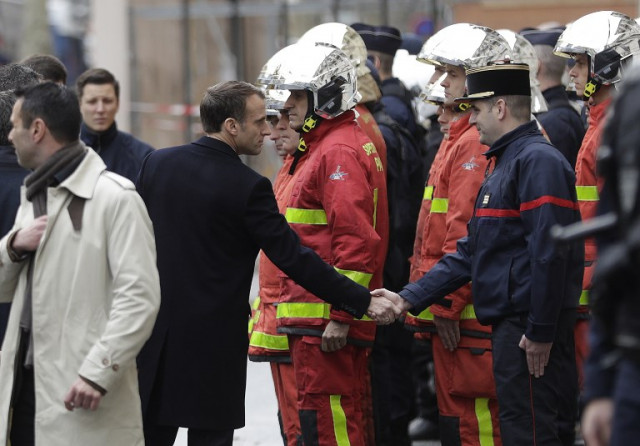
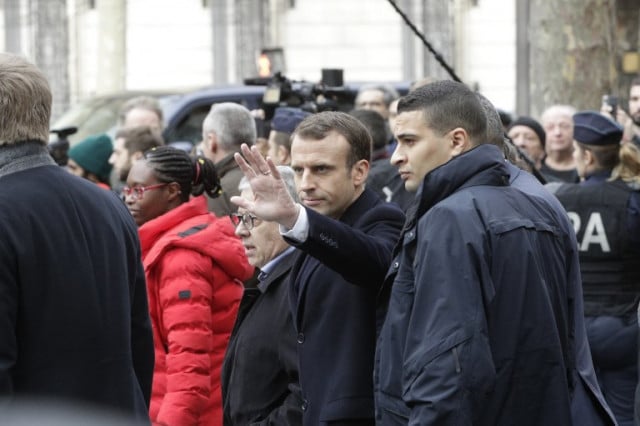
Armored vehicles deployed in Paris
These armored vehicles (pictured below) will be ready to be deployed in Paris on Saturday. There will be 12 of them and apparently it will be up to the Prime Minister whether the police put them into action.
They are rarely used in cities in France and were last used by gendarmes to evacuate the contested airport site Notre-Dame-des-Landes in western France, which saw fierce clashes with protesters.
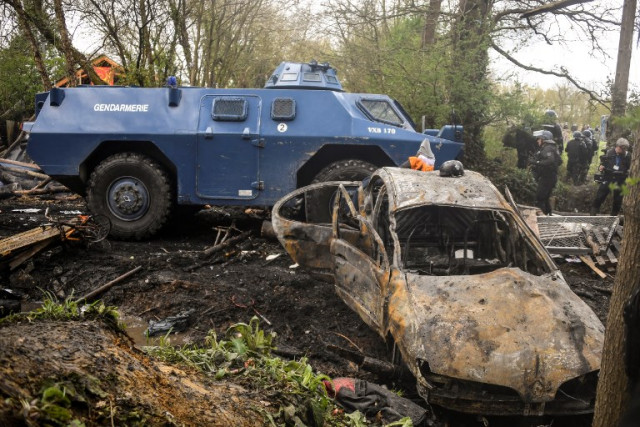
Companies urged to hike wages by government
The French government appear to have realised this crisis is about far more than fuel taxes. The labour minister Muriel Penicaud held talks with bosses and unions on Friday and suggested that companies take the opportunity to boost workers' wages.
“Everyone can do something, so everyone must do something,” she said. But the minister stopped short of using the law to force businesses to boost wages accepting that would warm competitiveness.
“Gilets jaunes”: Pénicaud suggère aux entreprises de verser une prime exceptionnellehttps://t.co/MootvpsFZR pic.twitter.com/WlSjZd23IR
— Challenges (@Challenges) December 7, 2018
Police allowed to carry out extensive ID checks
Paris prosecutor Remy Heitz said police in the city have been given the power to carry out stop and search checks at any “sensitive points” in the city in order to try to identify any individuals seeking to cause trouble.
Truckers union calls off strike
At least one conflict appears to have been resolved in the last few hours. One of the two truckers unions who called on lorry drivers to begin a rolling strike on Sunday evening has called off the action after talks held with employers and the government.
The FO union said it had received guarantees that overtime rates would be guaranteed. It's not yet clear whether the CGT union will push on with the strike.
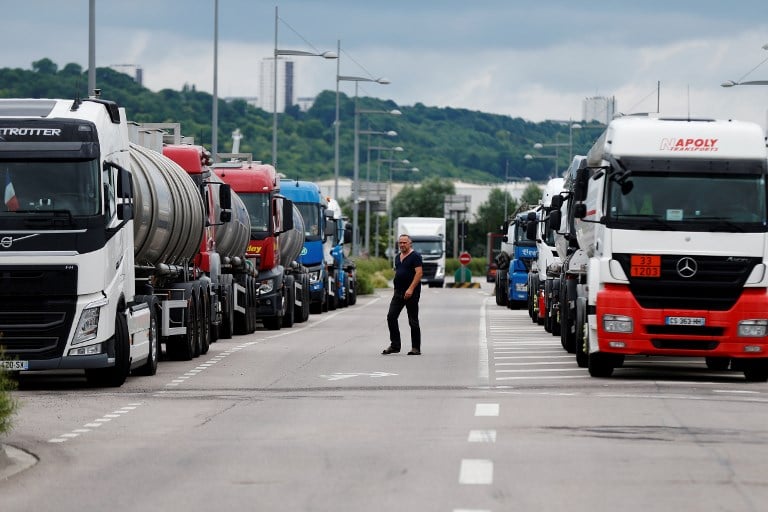
Interior Minister speaks
France's Interior Minister Christophe Castaner has just given a press conference. He declined to give too many details of the security plan for Saturday in Paris for fearing of tipping off the rioters.
The minister confirmed that the government believes “radical elements” will mobilise on Saturday.
He did confirm the number of police to be deployed: 8,000 in the capital and 89,000 around France. Castaner again pleaded to peaceful gilets jaunes protesters:
“I hear the anger, the government hears the anger. We have made concessions,” he said.
#GiletsJaunes : suivez en direct la conférence de presse de @CCastaner ?➡ https://t.co/vIp9eqUUIg pic.twitter.com/KAtLiOGkWh
— LCI (@LCI) December 7, 2018
11:30 – Live blog
We've decided to launch a live blog to cover the day's news around the yellow vest movement and the planned protests on Saturday. There is a lot going on in France right now and things are changing rapidly. We'll have live updates on everything that you need to know today so please keep checking in with us and refresh the page manually for updates.

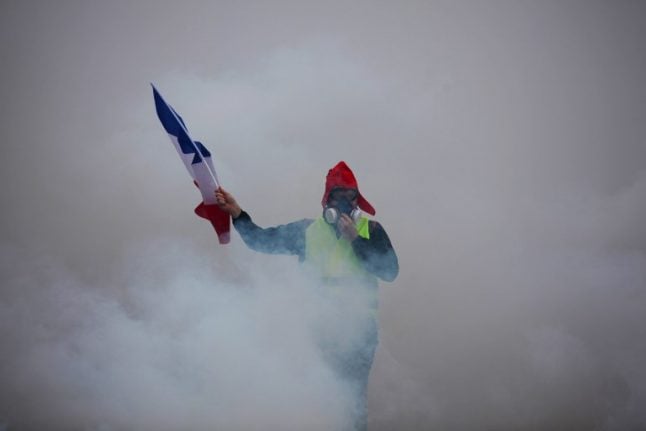
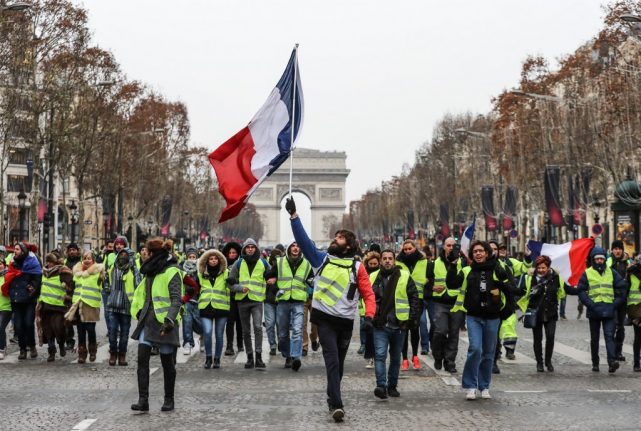
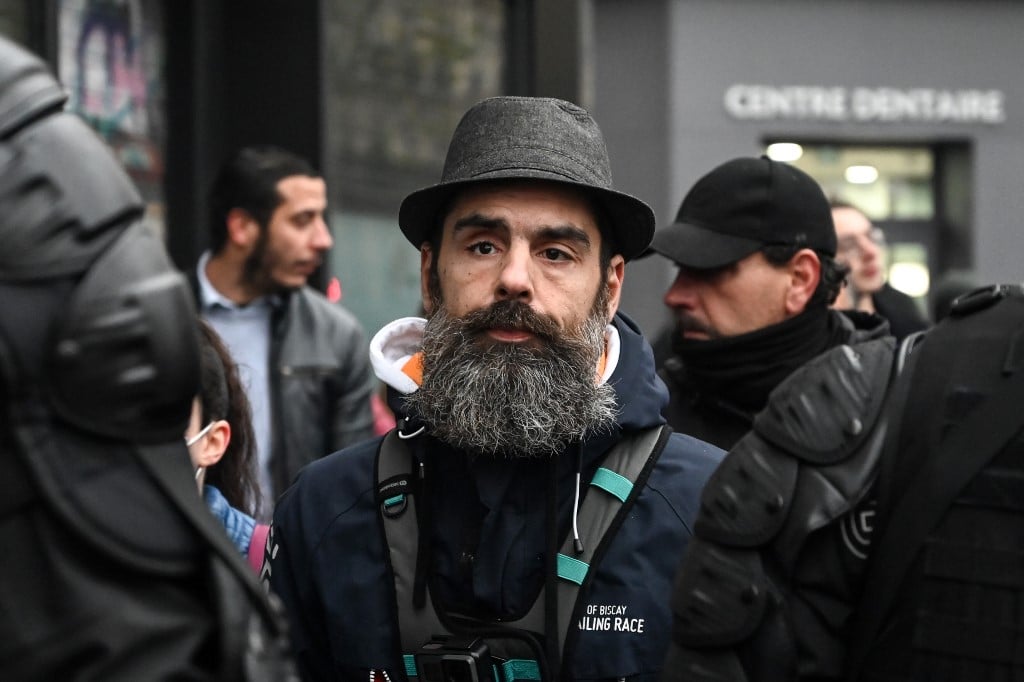
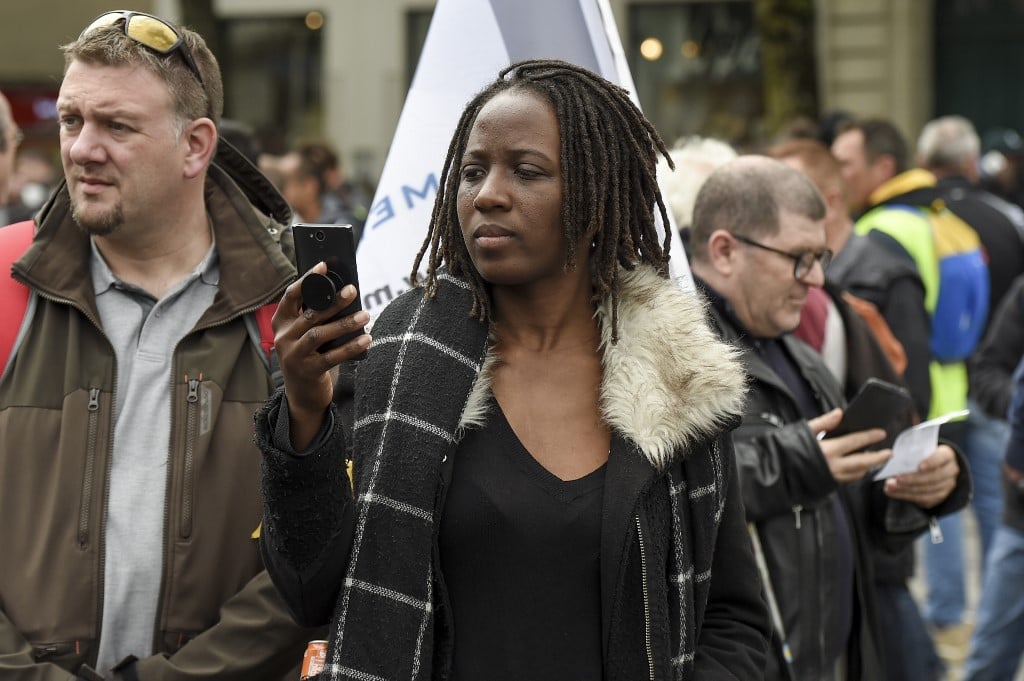
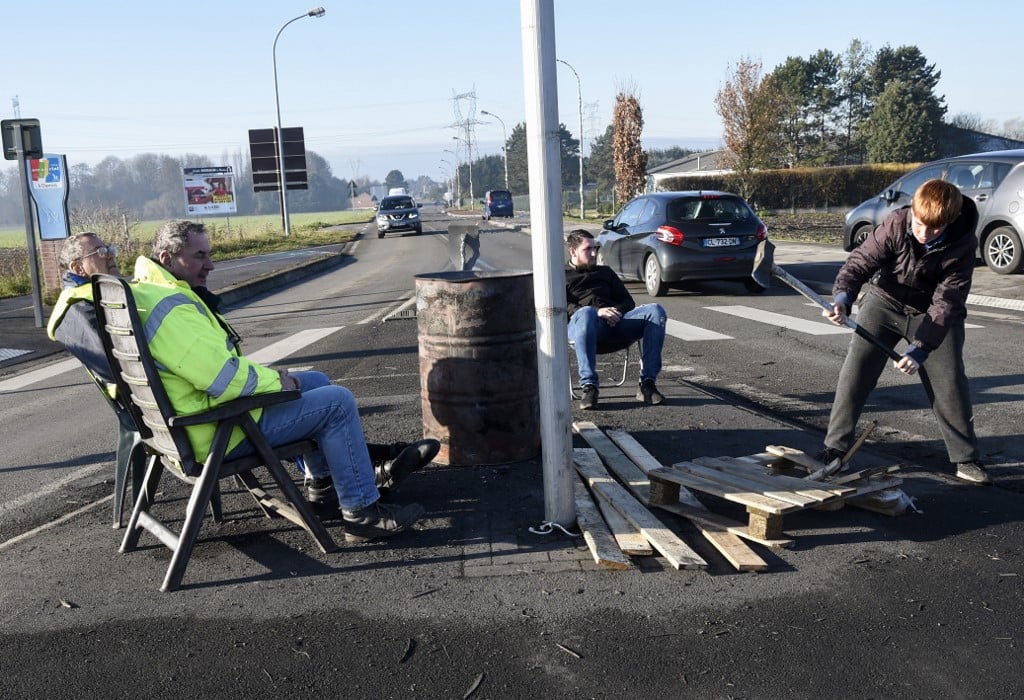
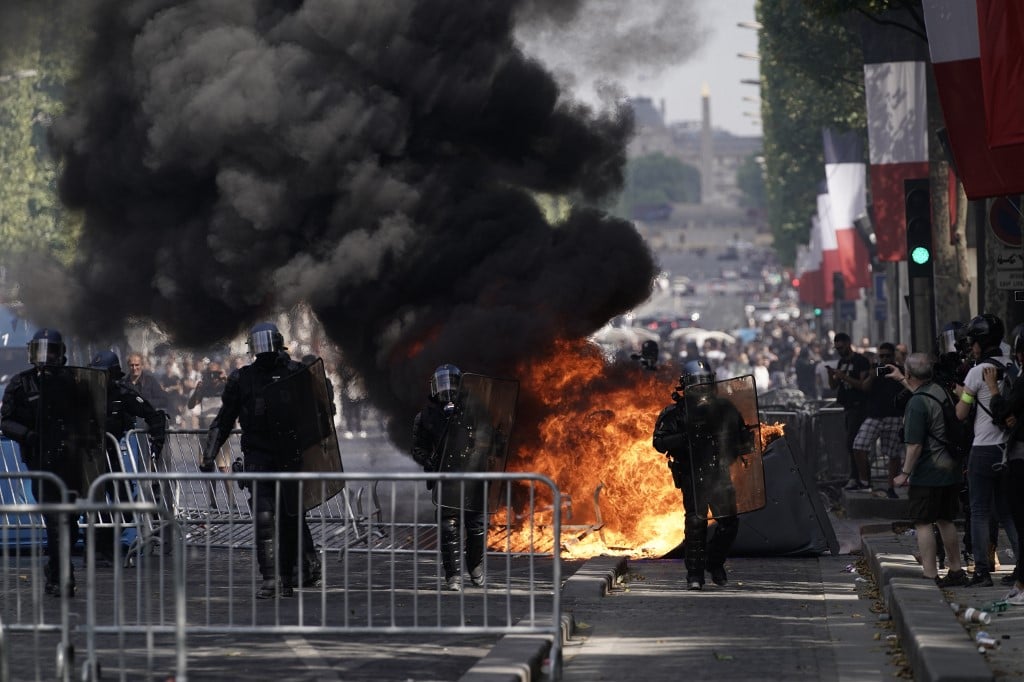
 Please whitelist us to continue reading.
Please whitelist us to continue reading.
Member comments